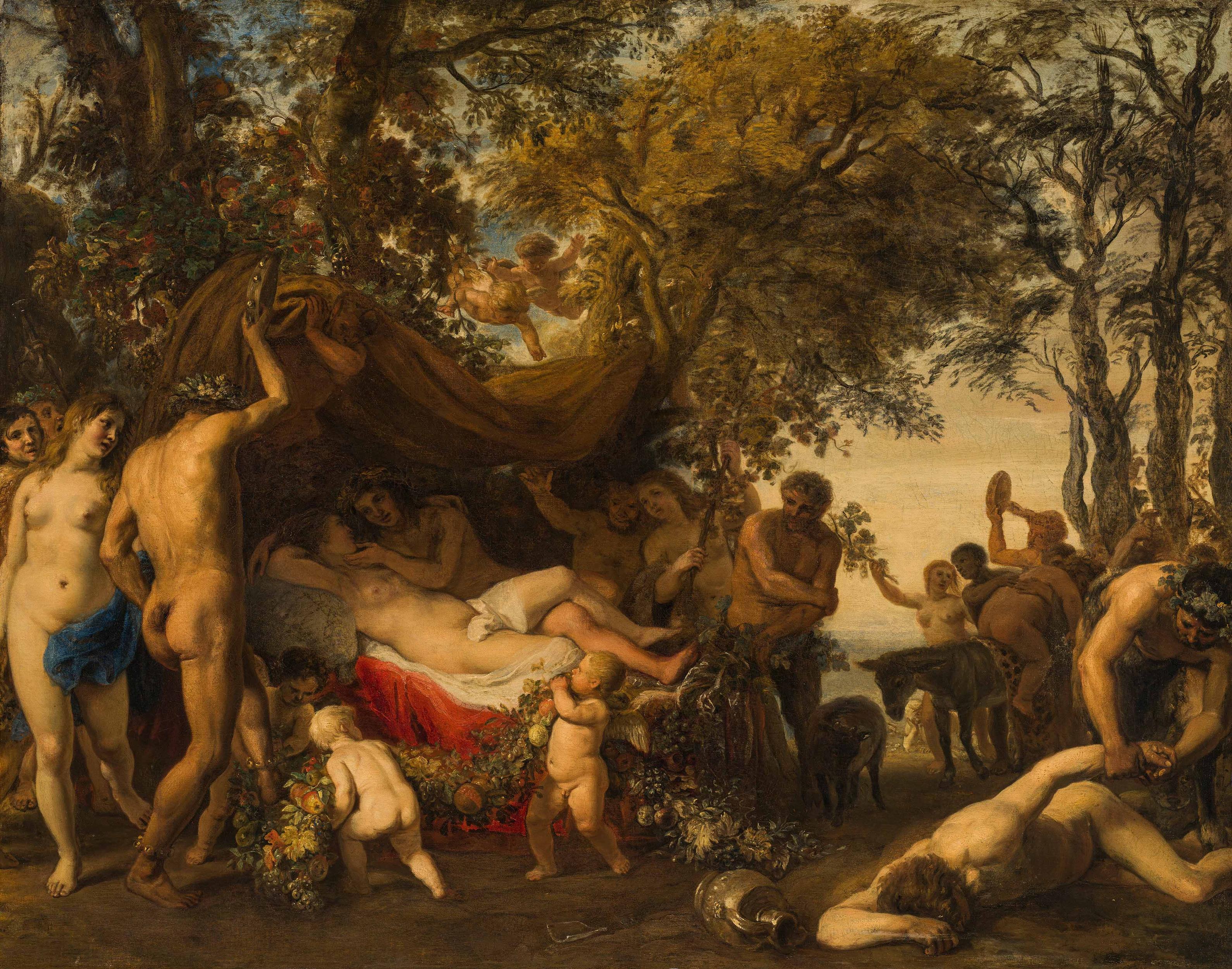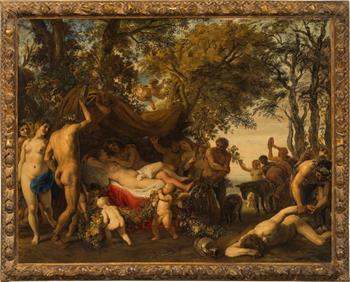3026
Johann Liss
(Oldenburg um 1597 - 1631 Verona)
„The wedding of Bacchus and Ariadne“
c. 1625
oil on canvas; framed
92 x 117 cm
Provenance
art dealer J. O. Leegenhoek, Paris;
Dorotheum, Vienna, 22 March 1966, lot 78;
since then private property, Vienna
Certificate by Prof. Dr. Kurt Steinbart, 10 May 1963, is enclosed.
Certificate by Prof. Giuseppe Fiocco, 10 June 1963, is enclosed.
Reserve Price: € 50.000 +fees +if applicable Droit de Suite
The same fees apply for bids at the reserve price as during the auction and a knockdown can take place immediately after processing.Estimate: € 35.000 - 70.000
Johann Liss, who died at an early age in his thirties, left behind only a small but all the more impressive oeuvre. Born in Holstein in Germany, the artist was drawn to the Netherlands (Amsterdam, Haarlem and Antwerp) at a young age. Travelling via Paris and Venice, he settled in Rome from 1622. When he returned to Venice at the end of the 1620s, he created numerous works there, but died already in 1631 from the outbreak of the plague.
Since the present painting incorporates both Dutch-Rubenesque and Italianate influences, it is assumed to have been painted around 1625. It depicts the story of the marriage of Bacchus and Ariadne on Naxos as told by Ovid. After the Cretan princess has helped the hero Theseus to defeat the Minotaur, the latter leaves her behind on the Mediterranean island. When Bacchus, returning from Asia, finds her in despair on Naxos, he takes Ariadne as his wife.
In contrast to the far more frequent treatment of the theme as a triumphal entry of Bacchus or as a lavish banquet, in the present painting the focus is on the actual marriage. The couple is united on their love bed, covered by a canopy, and Bacchus' entourage is celebrating exuberantly with all earthly pleasures. In the view of the wooded landscape is the classic motif of a Silen, overcome by wine, being hoisted onto a patiently waiting donkey, while on the right of the picture a buck-legged satyr turns to a companion who has already fallen to the ground. Connecting the two halves of the picture and emphasising the main scene, putti present an exuberant garland of fruit. They lead the viewer's gaze to an unclothed tambourine player and a female beauty draped only with a shawl, whose bodies demonstrate the artist's masterly skill in modelling figures. Prof Dr Kurt Steinbart assumes that the head looking directly at the viewer on the left-hand edge of the picture is a self-portrait of the artist.
Comparable mythological works by Johann Liss in terms of composition, landscape and figure modelling can be found in the "Schindung des Marsyas" (Pushkin Museum, Moscow, inv. no. 2722) or in the "Rückkehr des Adonis" (Staatliche Kunsthalle Karlsruhe, inv. no. Lg 751).


